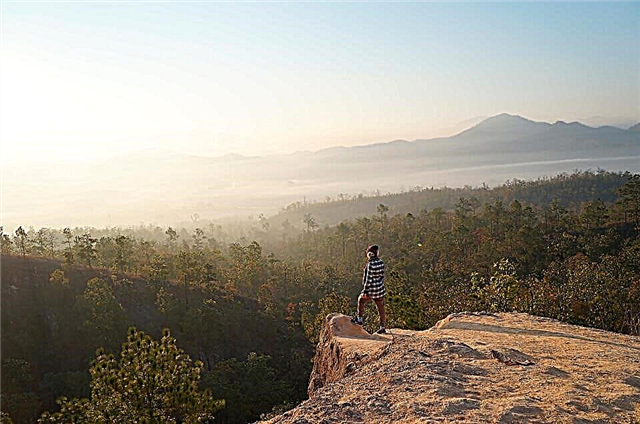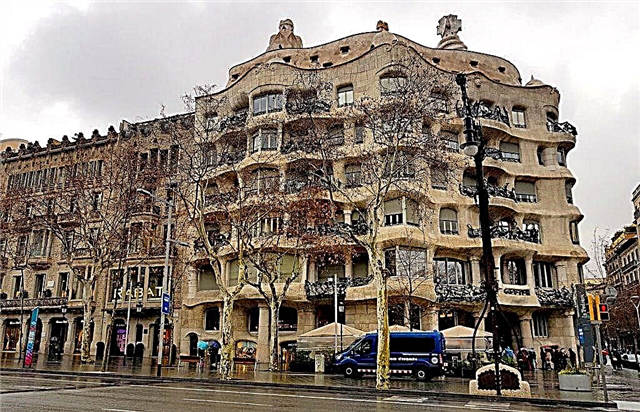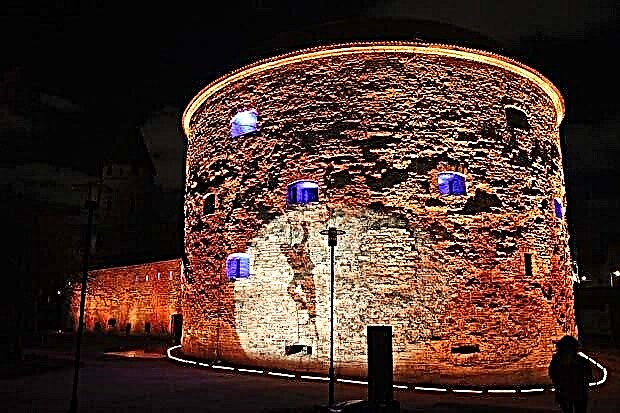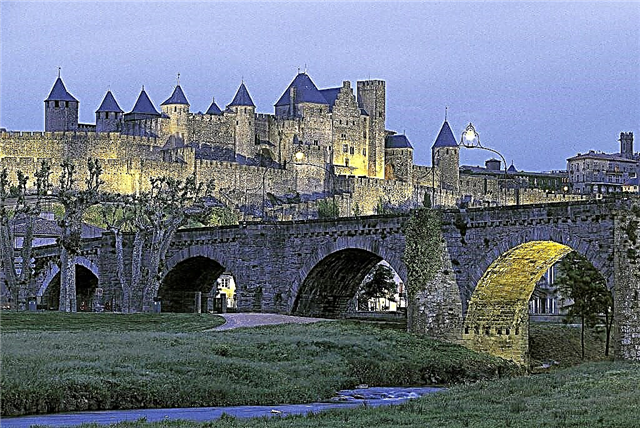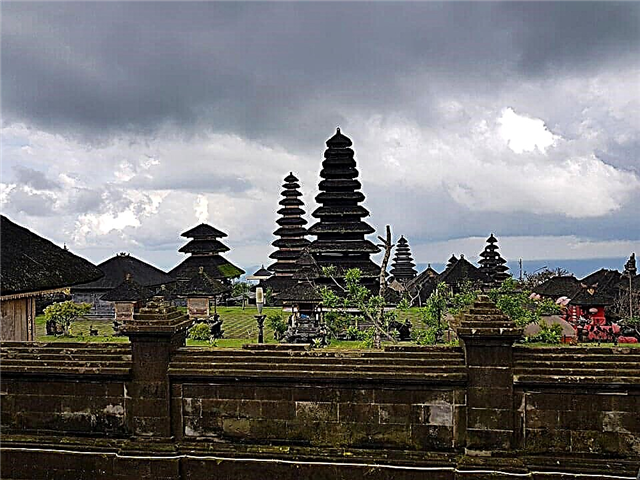Despite the eventful past, the ancient Pura Besakih Temple in Bali was included in the excursion programs of the island's agencies several years ago. The main flow of tourists bypasses this place. The reason is the remoteness from the main seaside resorts of the island. And completely in vain! The building is covered with ancient legends: visitors plunge into the depths for several centuries. Here you can not only see the ancient architecture, but also get acquainted with the traditions of Hinduism. Tourists who come to the temple on holidays will see the festive ceremony. Walking around the complex on ordinary days, when there are no believers, is simply pleasant: the stone buildings are covered with emerald moss. This gives the ensemble an unusual look.
Mother of temples

Locals call Pura Besakih the mother of all temples. And there are reasonable explanations for this:
- the territory occupied by the complex is huge: 150 thousand square meters
- there are a huge number of temples here: according to experts, more than a thousand
- the complex has not only religious buildings, but also buildings for economic purposes: granaries, premises for the life of monks
- the place where the temple is located is interesting in itself: this is the slope of the active Agung volcano, the highest point of the mountain is 3142 meters
- according to Hindu beliefs, an axis passes through the complex, which is the center of the universe
- the place for sacrifice was chosen long ago: the most ancient structures date back to the times of paganism
Hindus pray in the Mother of the temples to all the supreme gods.
Construction history

On the site of the current complex, there are buildings that are more than 2 thousand years old. These are fragments of stairs and the remains of altars. But in those days, the inhabitants of the island were pagans, and made sacrifices to the pagan gods. And for the first time in historical documents, Pura Besakih is mentioned in the 11th century, but as an already functioning temple. Oral legends speak of a wandering monk who founded Pura Besakih on the site of a pagan temple in the 8th century.
And according to other sources, again oral, in the 10th century, Raja Kesari ordered the construction of the complex. But there is no written confirmation of this hypothesis. Researchers assume that the ruler only completed the existing structures. Until the 15th century, there is no written evidence that religious rituals were held in the temple. And in the 15th century, when the ruler moved his residence to the center of Bali, the complex began to be mentioned in documents as a place where services are held. From that moment on, any supreme raja allocated funds for the improvement of Pura Besakih.

The inhabitants of Bali believe that the gods living in the temple protect them from harm: it is enough just to hide behind the walls of the structure. Indirectly, this is confirmed by the volcanic eruption in 1963: the lava split into 2 parts and bypassed the complex. The people who took refuge in the temple were saved. But the previous disaster, which occurred in 1917, caused significant damage to the buildings.
Architecture

Tourists call Besakih "the black temple": all buildings are made of dark stone, the roofs of the buildings are also black. The places of worship have no walls: the roof rests on columns, which are also dark. This openness shows that the border between the world of the living and the spirits is transparent and conditional. Black color is diluted with gilding, which adorns altars, columns and carved details of gates, and bright sarongs - they are decorated with statues that protect the complex from enemies.
A distinctive feature of the complex is the measure tower. They are like pagodas with several tiers: the higher the structures, the more significant the god to whom they are dedicated. When decorating the interiors, the traditional colors of Bali are used: black (Vishnu prefers it), yellow (gold) corresponds to Ida Sankhyang Vidi Vasa, red (Brahma loves this shade) and white (Shiva gives it). They favorably dilute the impression of dark tones.
The central temple (Agung Panataran) is divided into several zones:
- To get to the first tier, you need to climb a staircase of 52 steps. The temple is protected from evil spirits by statues of monsters sitting on the sides. On the platform in front of the entrance there is a gate divided in half: a symbol of the world, consisting of gods and people.
- To get to the next zone, you must enter the gate. Immediately on the site is the throne of the supreme god - Shiva. Slightly lower are the places for Vishnu and Brahma. In addition, there are buildings on the site: for offerings to the gods, for prayers, for priests to rest.
- The third tier is for the gods. To get here, you need to climb several flights of stairs. The measure zone begins. One of the towers houses an archive and, according to legend, treasures.

At the very top there are buildings that are closed to tourists: the Shiva temple and the temple of the holy ancestors of Raja Klungklung.
INAYA Putri Bali
Bali
Located along the beach in the tourist area of Nusa Dua

Hard Rock Hotel Bali
Bali
Rock and roll styled located next to Kuta Beach

Munduk Moding Plantation Nature Resort & Spa
Bali
Luxury suites and villas

Udara Bali Yoga Detox & Spa
Bali
It offers an outdoor pool and other amenities

Amnaya Resort Kuta
Bali
It offers an outdoor pool and other amenities

What to see

One day is not enough to inspect all the buildings of the complex. In addition, walking around the territory in the heat or in the dark is unpleasant. Therefore, if time is limited, you should focus on:
- The central temple is Agung Panatarane. It is easy to get here through the main entrance. The temple has a stepped structure: each next tier is higher than the previous one.
- Dangin Kretege: It is built east of Agung Panataran. This is Brahma's house.
- Batu Madege. To explore the attraction, it is recommended to head west from Agung Panataran. Vishnu lives here.
- Pande Vesi. To get acquainted with the temple of the Heavenly Blacksmith, you will have to overcome the entire central staircase.

But it is also interesting to simply explore the complex: in sunny weather, a stunning view of the temples and the surrounding area opens from the last platform.
Travel tips before visiting

In order to enjoy the inspection and avoid trouble, you should follow simple rules:
- It is not accepted to enter the territory of the complex without a sarong. It is offered to be purchased at the entrance or rented (the average price is 20 thousand rupees). You can replace the bedspread with any long and wide scarf.
- It is hot to walk around the complex during the day: it is recommended to arrive early in the morning or at sunset.
- Tourists who are late should know: they will not be able to find an overnight stay in the vicinity, the locals refuse to let them in, and there are no hotels nearby.
- To avoid the intrusive attention of homebrew guides, it is recommended to enter through one of the side entrances.
- To visit, you should buy a ticket at the box office: otherwise you will have to fight off local crooks who offer the same at exorbitant prices.
- It is recommended to take into account that the territory is not cleaned for a long time after the holidays: you will have to observe mountains of garbage.
- Some tourists recommend meeting the sunrise at the top of the Agung Panataran temple. To do this, you should arrive in Besakih in advance.
- When entering the territory before 8 am and after 5 pm, tickets should not be purchased: ticket offices are closed.
- At the entrance to the complex there are stalls with souvenirs, fruit and drinks stalls. And you can have a snack on the lawns.
- In the dark, not the entire area is illuminated: the complex should be examined with caution.
- Besakih is a working Hindu temple. People belonging to other faiths should refrain from attending levels above the first. It is also forbidden to enter the temples.

It is better to walk around the complex, observe wonderful vegetation and meditate on ordinary days.But in order to see the colorful ceremonies, you should come to Besakih on the days of Hindu holidays. An unforgettable impression will be left by the Galungan holiday, symbolizing the victory of good over evil.
Opening hours and ticket prices
For tourists, the complex is open from 8 am to 5 pm. But in order to pray, you can go to the territory around the clock. A ticket for an adult visitor will cost 15 thousand rupees.
Where is it located and how to get there

Fans of exotic travel can be reached by regular bus from Denpasar to the village of Besakih. But when planning a trip, you should take into account: the bus station is located 8 km from the city, and you will have to walk to it. The comfort of the regular buses also leaves much to be desired. Some tourists try to hitchhike to Besakih. But they note that catching anything moving in the right direction is difficult. It is reasonable to rent a car or bike and drive to the village of Besakih using the navigator. The journey from Denpasar will take 1.5 hours, from Lovin - 2.5 hours. Paid parking is available in front of the complex.



